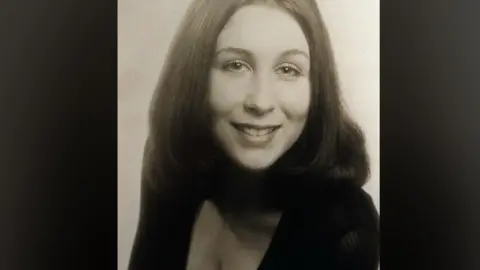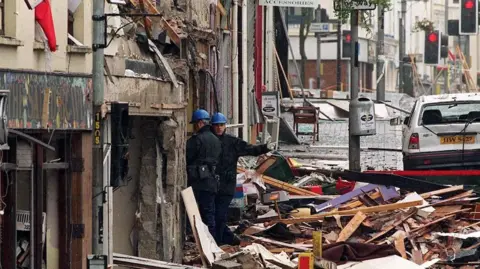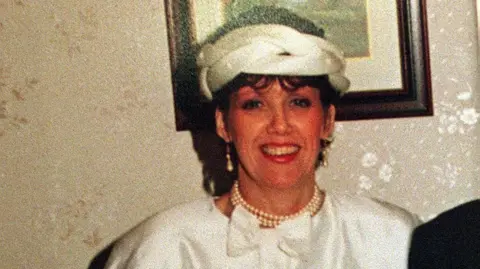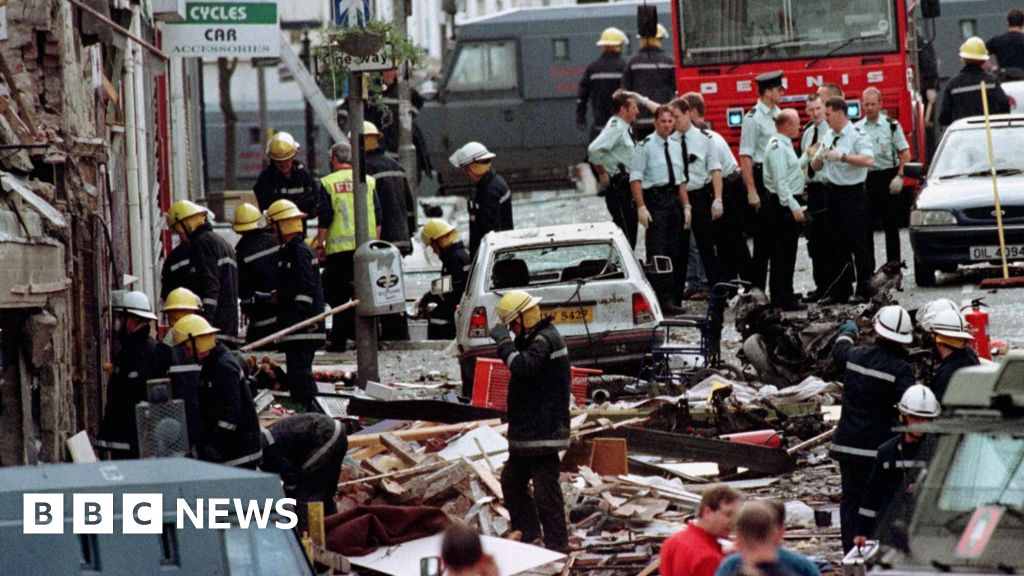BBC News NI crime and justice correspondent
 Pacemaker
PacemakerA student victim of the Omagh bombing was accepted onto a university course in Manchester on the day her funeral was held, an inquiry has heard.
Three more victims of the attack, which was the single biggest atrocity of the Troubles in Northern Ireland, are being commemorated at the Omagh Bombing Inquiry on Thursday.
The attack, carried out in 1998 by the Real IRA (RIRA), killed 29 people, including a woman pregnant with twins.
Debra-Anne Cartwright, 20, was killed on Market Street, after the beauty salon she worked in was evacuated due to the bomb warning.
At the time, she was awaiting A-level results.
 Pacemaker
PacemakerAt the beginning of the inquiry’s third day at the Strule Arts Centre, a lawyer told the inquiry that Ms Cartwright had applied for a textile design course and news of her success was received just days after the attack.
Lord Turnbull said the details “further compound the cruel denial of her future”.
The first week of the inquiry will conclude on Thursday, with victims Geraldine Breslin and Gareth Conway also set to be commemorated.
Detailed pen portraits of the victims have been read out during the hearings this week, in many instances by their relatives.
 Pacemaker
PacemakerGeraldine Breslin was a 43-year-old married mother who worked as a shop assistant at Watterson’s drapers.
Eyewitnesses said they saw her calling out for her husband in the aftermath of the attack in spite of her serious injuries.
She died eight hours after the blast – at the inquest into the deaths the coroner said she had been “fighting very much to live”.
 Pacemaker
PacemakerGareth Conway was 18 and had just gained a place on an engineering course at university when he was killed.
His sister was a nurse at the Tyrone County Hospital and went to work after hearing about the bomb – it was then that she heard he was missing.
Gareth’s school friends and Gaelic football teammates formed a guard of honour at his funeral.
What was the Omagh bomb?
The bomb exploded in Omagh town centre on a busy Saturday afternoon on 15 August 1998.
The attack took place four months after the signing of the 1998 Good Friday Agreement.
The RIRA – a dissident republican paramilitary group – disagreed with the Provisional IRA’s decision to call a ceasefire ahead of the talks and continued to plant car bombs in towns across Northern Ireland.
But the Omagh bomb was by far the RIRA’s most deadly attack.
Nine children, including a baby, were among the dead.
More than 200 other people were wounded, some of whom survived with life-changing injuries.
Who carried out the Omagh bomb?
Three days after the 1998 attack, the Real IRA released a statement claiming responsibility for the explosion.
It apologised to “civilian” victims and said its targets had been commercial.
Almost 27 years on, no-one has been convicted of carrying out the murders by a criminal court.
In 2009, the judge in that case ruled four of the men – Michael McKevitt, Liam Campbell, Colm Murphy and Seamus Daly were all liable for the Omagh bomb.
The four men were ordered to pay a total of £1.6m in damages to the relatives, but appeals against the ruling delayed the compensation process.
A fifth man, Seamus McKenna, was acquitted in the civil action and later died in a roofing accident in 2013.

